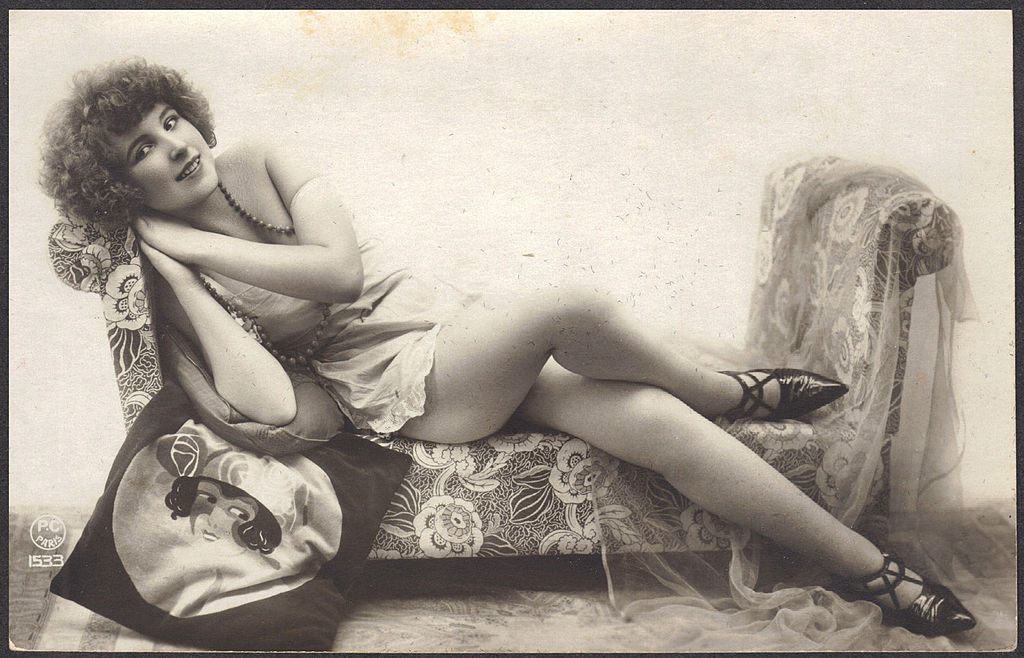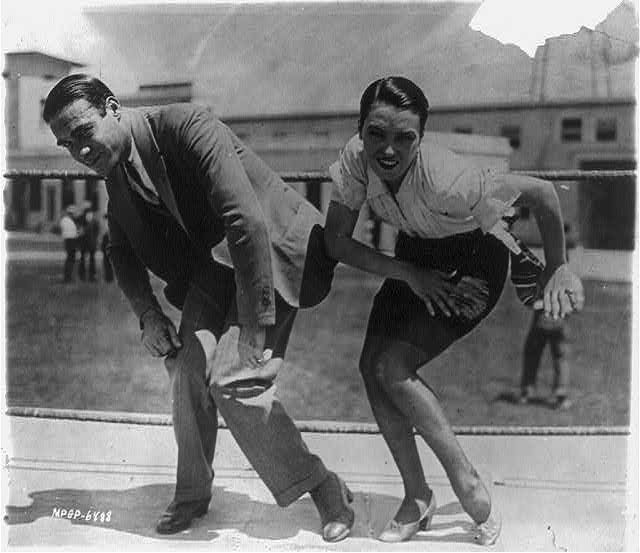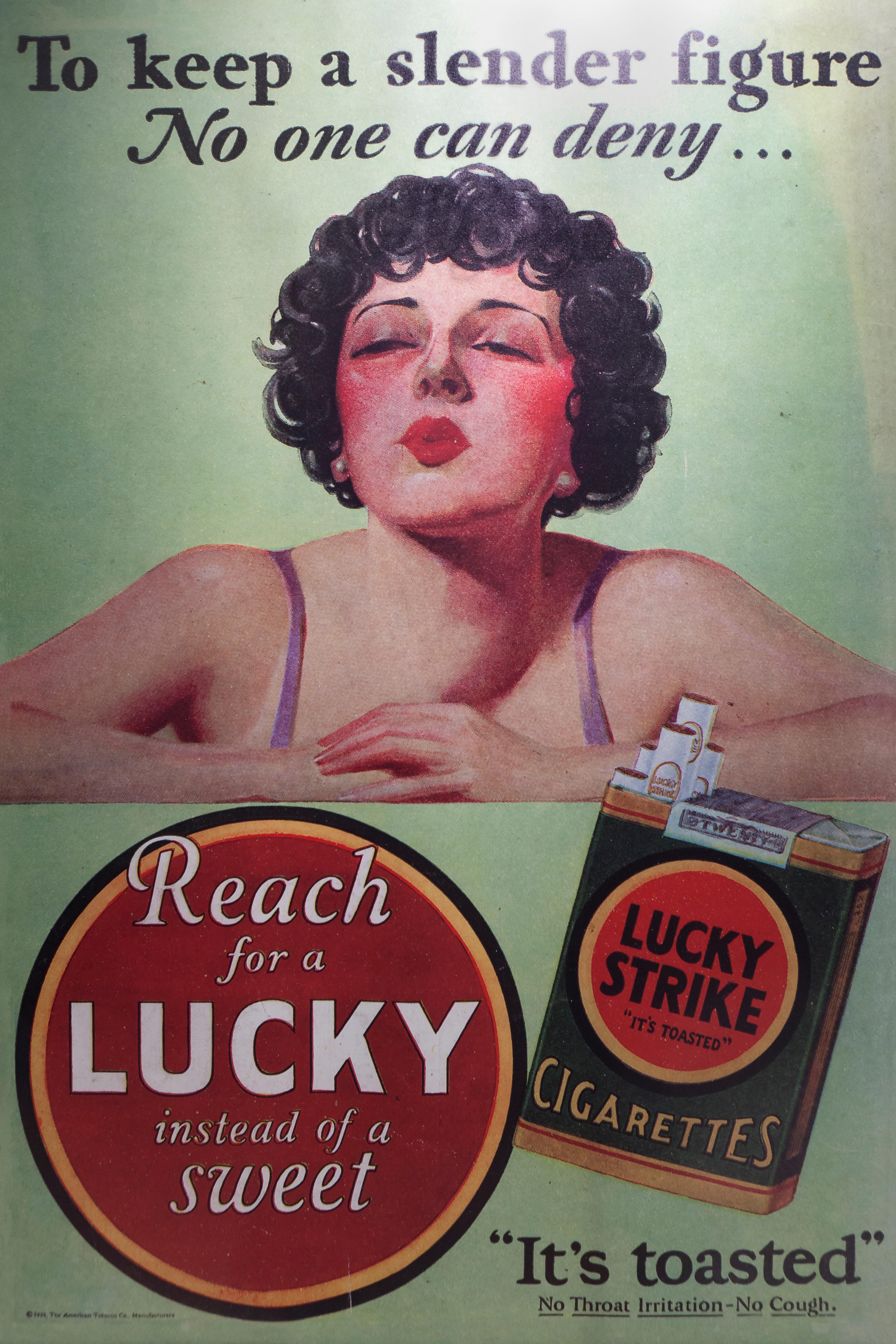Looking Like a Flapper Meant a Diet of Celery and Cigarettes
A new standard of beauty led to today’s weight-loss regimens.

In the early 20th century, Americans endlessly discussed and debated flappers. The Flapper, a magazine devoted to this new image of womanhood, used this description in 1922: “Bobbed hair, powder and rouge on the face; use of lipstick; ‘plucked’ eyebrows, low cut sleeveless bodice, [and] absence of corset.” All these elements were in their own way revolutionary—in earlier eras, heavy cosmetics were taboo, and clothing covered rather than revealed. But one aspect was left out: The flapper look was lean and androgynous, and maintaining that ideal often required a special “flapper diet.”
Over the centuries and across cultures, the ideal female body type has fluctuated. In many Western cultures, the pre-flapper generation considered a certain plumpness a sign of health, and fashion called for full skirts. But social reformers and women’s rights advocates had long been wary of abundant cloth, which could easily catch fire, and tight corsets, which could compress and deform women’s torsos. Lighter, shorter dresses became ever more fashionable after World War I, as did comfortable clothing and relaxed social mores. Restrictions on dating, dancing, and sex loosened. The cosmetic changes reflected changing opinions on femininity, and the person who most epitomized the new era was the corsetless, cosmetic-wearing, free-spirited flapper.
Yet other restrictions surfaced. Designers such as Coco Chanel popularized a slim silhouette. The bathroom scale (patented in 1916) became a household staple. Books, magazines, and the media began depicting fat as the result of insufficient willpower. While people have always dieted to fit their era’s beauty standards, the new female silhouette was a departure from previous buxom ideals. “Though the flapper image minimized breasts and hips, it radiated sensuality,” writes historian Margaret A. Lowe. The slender silhouette seemed modern. Female curves seemed old-fashioned.

Suddenly, raw vegetables were in vogue. In Lowe’s study of the diet of Smith College students in the 1920s, she quoted a campus warden who noticed that consumption of potatoes had diminished, while students were eating more celery, tomatoes, and lettuce. Outside of Smith, people followed the Hollywood 18-Day Diet—a prototype of modern fads. Inspired by the burgeoning film industry, they ate only oranges, grapefruit, toast, and eggs.
But strict diets were no easier to follow back then than they are now. Yvonne Blue was a Chicago teenager who came of age in the 1920s. Her parents described her as “the personification of wild modern youth”—in other words, a flapper. In her diary, she recorded days of fasting and longing descriptions of the buttery grilled cheese and lemonade she denied herself. According to historian Joshua Zeitz, “the expectation that they starve themselves in pursuit of flapperdom [was] a very real dilemma for many young women in the 1920s.” It didn’t help that the decade introduced new processed treats like Reese’s Peanut Butter Cups, Good Humor ice cream, and Velveeta cheese.
The actresses that young women imitated were thin—or else. Slender stars such as Colleen Moore ate no potatoes, sweets, or butter. Though film was a newer medium, magazines extensively covered actresses’ diets and struggles with weight. Clara Bow was scrutinized every time she put on weight, and Barbara La Marr, who epitomized flapperdom’s wild side, died at age 29 from a combination of drug addiction and extreme dieting.

Many stars and their fans depended on diets drawn up by strong personalities. The Medical Millenium Diet, pioneered by William B. Hayes, called for patients to chew slowly, eat one dish per meal, and endure regular enemas. But far more influential was doctor Lulu Hunt Peters. Her 1918 book Diet & Health: With Key to the Calories was the first weight-loss best-seller, and the first book to advocate calorie-counting to achieve a “modern” look.
With a chatty style and goofy illustrations, Peters told readers to ignore the unhelpful advice of friends and family about the dangers of reducing. Food as fuel was the mantra. “Any food eaten beyond what your system requires for its energy, growth, and repair, is fattening, or is an irritant, or both,” she wrote. A sample lunch consisted of cottage cheese and a French roll (unbuttered). To resist the lure of eating, Peters urged her audience to regard all food as potential calories. The responsibility of watching one’s weight, she wrote, was a worthwhile but lifelong struggle. Diet & Health became the bestselling nonfiction book of 1922. Peters, who was a newspaper columnist as well as a doctor, became “the best known and loved physician in America.”
Much flapper diet advice sounds familiar. Healthy food and exercise are touted as the best ways to slim down, then as now. But this was still relatively novel during the 1920s. “For a nation unaccustomed to a new ideal of slenderness, this was a tough ideal to achieve,” Zeitz writes. So women turned to laxative-laced weight-loss gums, slimming girdles, and cigarettes. Smoking distinguished flappers from their mothers and grandmothers, and cigarettes’ appetite-suppressing qualities were considered an asset.

That resulted in one of the biggest ad campaigns of the late 1920s. In 1928, the cigarette company Lucky Strike plastered colorful ads in magazines. In one, a pursed-lip flapper looks at the viewer. “To keep a slender figure no one can deny,” the ad trumpets, “Reach for a Lucky instead of a sweet.” The ads featured illustrations of women in long elegant dresses, and major film stars and Amelia Earhart endorsed the slogan. Marketing cigarettes as slimming agents for young women remained standard for years.
Soon enough, though, the flapper era was over. In 1931, the New York Times ran a story marveling at her disappearance, hastened by the collapse of the economy. She “is only a memory, as antique and romantic … as the Gibson girl,” the author wrote. She mused that the Depression-caused struggle of wheat farmers could be solved if former flappers went back to the bread-eating habits of their Victorian predecessors. But that never happened, and the slender flapper figure remains glamorous today.
Gastro Obscura covers the world’s most wondrous food and drink.
Sign up for our regular newsletter.
























Follow us on Twitter to get the latest on the world's hidden wonders.
Like us on Facebook to get the latest on the world's hidden wonders.
Follow us on Twitter Like us on Facebook